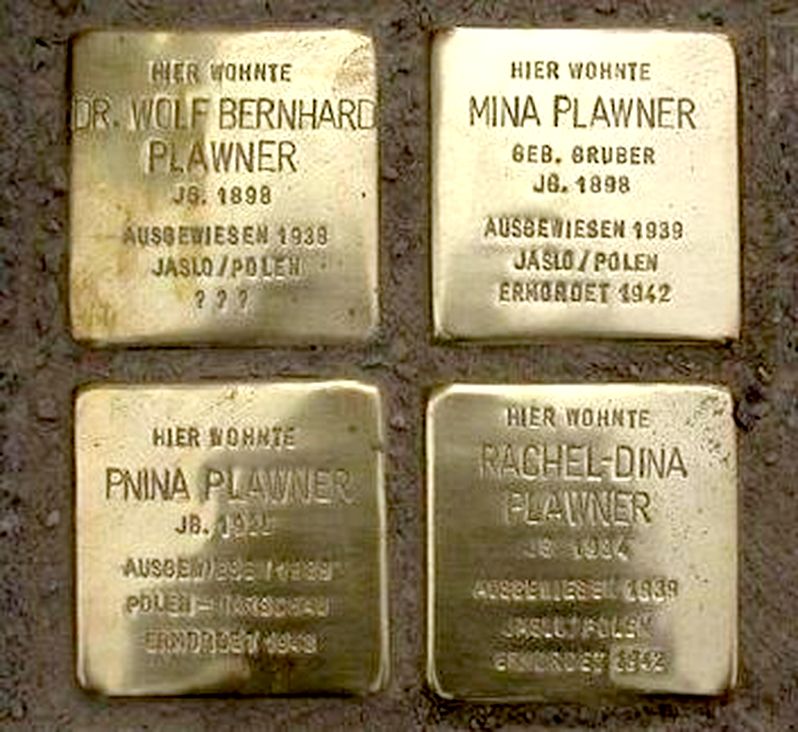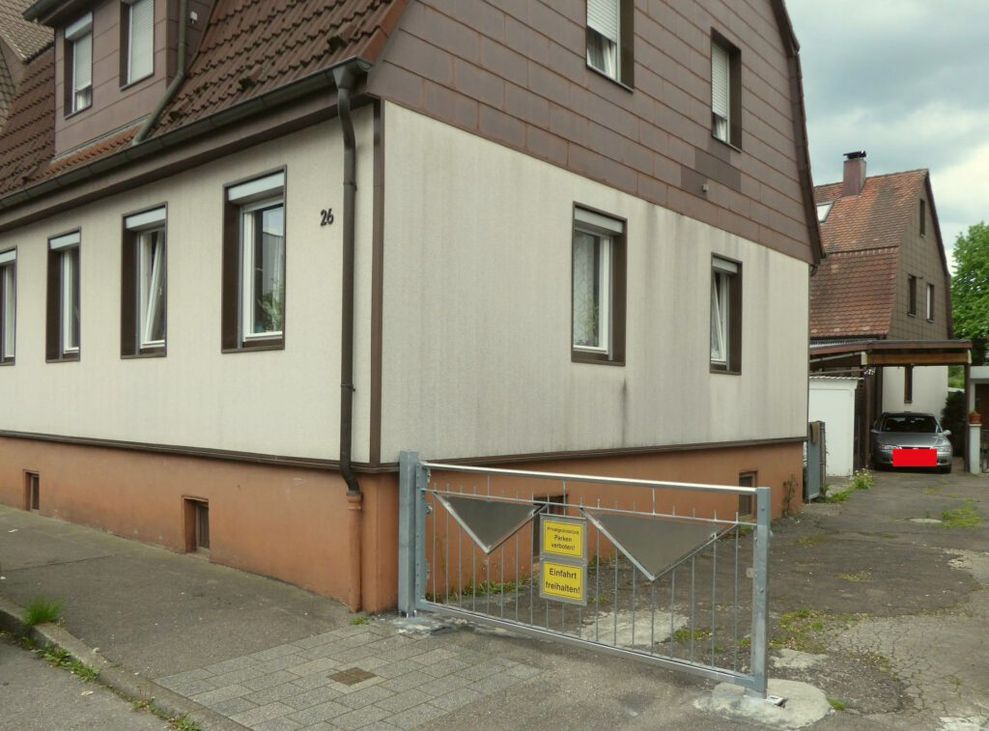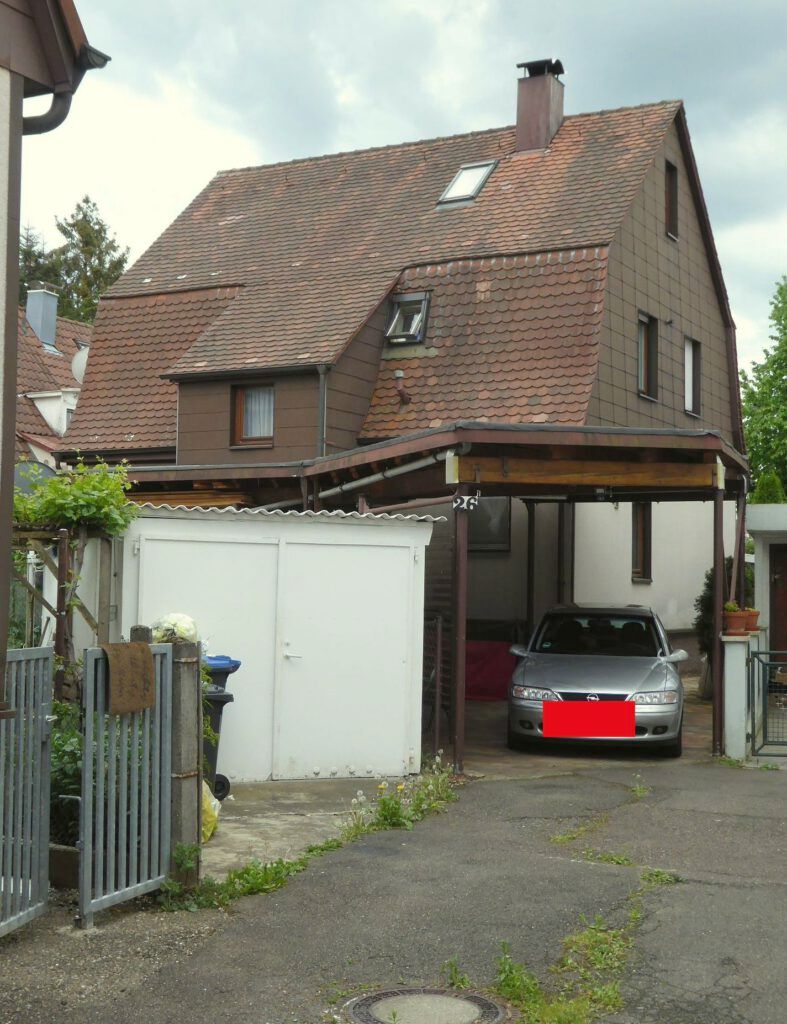Richard-Wagner-Str. 26

The Fate of a Jewish Family in Eislingen
From Auschwitz via Wien and Haifa into Richard-Wagner-Strasse
In Richard-Wagner-Strasse in front of No 26 on April 10 2007 four „Stolpersteine“ were laid by artist Gunter Demnig in remembrance of four people who had lived in Eislingen for ten years: Dr. Bernhard and Mina Plawner as well as their daughters Pnina and Rachel-Dina.

The family lived in then called Großeislingen from 1928, later part of the in September 1933 newly established town of Eislingen/Fils.
Origin and Education
How did the Plawners get to Eislingen? Bernhard Plawner was born in January 1898 in the then Austrian rural town Auschwitz, which the Jewish population that formed the majority called ‘Ospitzim‘. He studied before World War I together with his brother Oskar in Vienna. His subject was chemistry, then he completed his studies at the Technical High School with the title of a Doctor of Engineering (Dr.ing.). Bernhard married Mina (Minna) Gruber who was of his age and like himself came from Auschwitz/Oswiecim. Mina’s parents operated a restaurant in the center of the town in Ulica Koscielna 12 next to the Catholic church. For Mina working in the parental business did not seem to be a perspective. She attended a training as an educator of the Montessori principle. Like for many Eastern European Jews of both genders Zionism seemed to be a perspective of their lives, They emigrated in the 1920s into the British mandate territory Palestine and tried to get a hold in the city of Haifa. The land that they helped to construct was hard to the newcomers, diseases like Malaria threatened the immigrants, the life stayed very poor for most of them despite their efforts.

The couple did not manage to be economically established in the long run. Still in Palestine her first child was born: On March 7 1926 daughter Pnina came to live. But soon the young family decided to return to Europe and Dr. Plawner found an interesting and probably well -paid position in the Eislingen Paper Mill Fleischer. The original company had been bought by the Jewish Goeppingen entrepreneur Moriz Fleischer in 1892 and turned into a model of success, his sons followed him with similar results.
A good time in Eislingen
From 1928 Dr. Bernhard Plawner was department manager of Paper Mill Fleischer, situated west of Großeislingen, opposite the restaurant Waldhorn and he lived with his family in Richard-Wagner-Straße 26/1, obliquely opposite the Catholic Gemeindehaus (Community Center).

He was creatively in action in his company, for example he developed a special paper for a better preservation of apples. Witnesses of the time could remember the “private life“ of the family: Pnina had close friends in Eislingen as Frau Reichel née Goebel told. She attended the Catholic kindergarten in Koenigstrasse, the girl friends played in Richard-Wagner-Strasse, then later at home at Pnina’s until the “policeman“ took 50,- RM (Reichsmark) from Father Goebel because of forbidden “contacts with Jews“. Formerly, the Plawner house had been a friendly place for comrades from school and girl friends. “There were always sweets“, reported Andreas Köder. In June 1934 Pnina got a little sister: In a Stuttgart hospital Rachel-Dina was born. This was possibly the last enjoyable event in the family who in the meantime lived under Nazi rule. So Pnina Plawner had to leave the public school in Eislingen, she attended the Jewish Elementary School in Goeppingen which was founded at the end of 1936.
The deportation to Poland
On October 28 1938 Dr. Bernhard Plawner was arrested in his apartment and deported to Poland. He was one of about 18,000 Jews who lived in Germany but formally were Polish citizens. Mina Plawner and their daughters seem not to have been in the apartment when the father of the family was arrested for firstly they could avoid deportation and were hiding with the befriended family Schiffmann in Goeppingen, Hauptstrasse 11, but they were detected there after a few weeks and were also deported.
The traces of the Plawner family are lost in Poland. After Bernhard had managed to flee into the Soviet occupied area after the invasion of the Germans in 1939 and the division of Poland his wife asked him to come back into the German occupied Poland, “the Germans are not so bad.“ The family lived in the Southern Polish town of Jaslo which could look back at centuries of Jewish history. Dr, Plawner found work there and could support his family.
Ghetto Jaslo
Jaslo which had been occupied even on September 1939 by the Nazi German troops was in the part of Poland called ‚Generalgouvernment‘ and was supposed to become a “German town“.From the beginning of the occupation the Jewish population was terrorized, the Plawner family obviously had luck in this situation. Probably, during that time they tried to get an entry permit for Palestine the country they had been connected since the 1920s. Unfortunately, their attempt failed because of the strict reglemention of immigration by the British mandate force. For male and female Jews the age limit was 35 years, Mina and Bernhard unfortunately were one year too old. But at the end of 1941 / the beginning of 1842 all Jewish inhabitants of Jaslo – Jews from other communities added – were forced to move into a newly established ghetto which consisted of a few streets only and was fenced in by barbed wire. This fate was also the fate of the Plawners. It can be assumed that all family members had to do forced labor.
Pnina at the age of 16 for example worked in a cleaning command and also outside the ghetto. But the Plawners first had an unexpected “protector“: Ludwig Romeis.
In the memory of the family he is named the Schultheiß = Mayor of Jaslo, any verifications from other sources do not exist. However, Romeis was part of the murderous NS administration and was in connection with NS administrative head of the district Walter Gantz, a murderer who after the war was never held to account. But Ludwig Romeis, the capriciousness of the “master race” was arbitrary, first held his hands over the Plawner family. He gave food to Pnina and helped her to flee when it became clear that the ghetto was to be evacuated in August 1942. Pnina who was acting with her friend as a married couple, first could live in Kielce, then in Warszaw with false papers.
In spring her poor Polish was detected by a Volksdeutscher (a German who had lived in Poland before) who denounced her. Pnina and her friend were shot on the very day. The fair and blue-eyed Rachel would have been taken as his own daughter in his family, but the eight- or nine-year-old child wanted to stay with her mother. The further fate of Mina, Rachel-Dina and Bernhard Plawner has not been found out. Since summer 1942 male and female Jews from the Jaslo Ghetto were constantly shot. The ones who survived these terror acts were deported to extermination camp Belzec on August 19 or 20 1942 and murdered there. After the war the family was pronounced “dead”.
Bernhard’s brother Oskar Plawner survived the Shoah. His offspring live in Stuttgart. We thank them for the memories of the family and the photos.
(05.05.2020 pr/kmr)


Leave a Reply